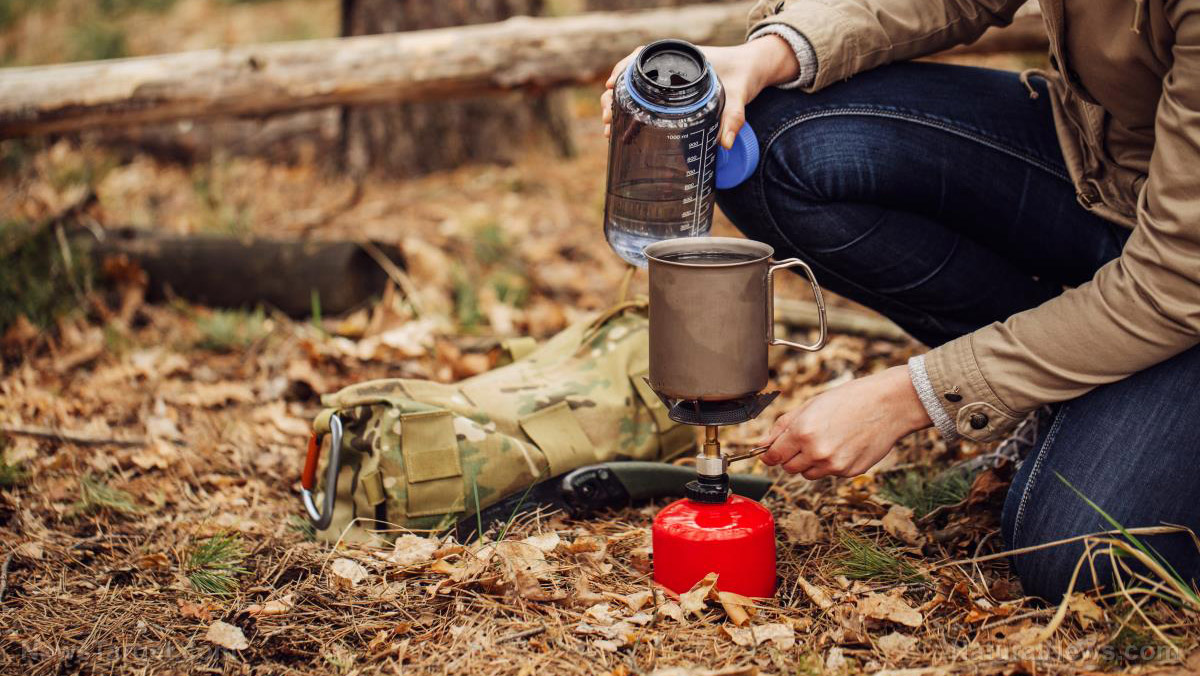How to make your own antiseptic sugardine to treat wounds
12/06/2018 / By Mary Miller

Traditionally, sugardine is a natural antiseptic used to treat wounds on horses, but it is now becoming more common for people to use it to treat their own wounds. Sugardine can also last for a very long time. Preppers can see value in sugardine as a quick and practical way to treat and prevent infections when SHTF. Follow this easy guide to making your own sugardine in case of emergencies. (h/t to AskAPrepper.com.)
Sugardine is a paste that is made using sugar and iodine. It utilizes the antibacterial properties of both ingredients to treat wounds and inflammation. Sugar can help restore the proper pH balance in tissue. It can also help stop the spread of infection by creating an anaerobic environment that is not conducive to the growth of bacteria. Highly-concentrated sugar can additionally hinder the growth of bacteria by drawing out moisture from a wound. Moisture promotes the growth of bacteria, and without it, the bacteria will simply die off. Iodine possesses antibacterial, antimicrobial and antifungal properties. Together, these two ingredients work together to become an inexpensive formula that can accelerate the granulation of tissue and help to cover open wounds. Sugardine is also associated to the growth of healthy tissue and can also help improve drainage. (Related: How to disinfect a wound almost immediately.)
Procedure for making your own sugardine
To create your own sugardine paste, you only need two ingredients, namely table sugar and 10 percent povidone iodine. If you are unable to find povidone iodine, you can also use betadine as a suitable alternative. Betadine is slightly more expensive, but is easier to find. The amount of sugar you will need will depend on how much sugardine you want to have by the end of the process. For instance, if you want one cup of sugardine, you will need one cup of white sugar. Adding the iodine to the mix will not create any additional mass or volume. You may also want to wear gloves while creating sugardine, as the iodine can stain your skin.
- Add half a cup of sugar to your mixing bowl.
- Slowly add the iodine to the sugar.
- Mix the sugar and iodine together, until you get a good consistency.
- Add the rest of the sugar to thicken the paste. Make sure it is thick enough to adhere to a wound. It should have a consistency that is similar to peanut butter.
- Once you have reached the desired consistency, place the sugardine in an airtight container with a lid.
The best part of sugardine is that it will not go bad. If the paste has settled in the bottle, you can easily stir it every once in a while.
How to use sugardine
Follow these simple steps for the proper application of sugardine on wounds and sores:
- Wet a gauze pad or clean cloth with water and slowly clean the wound starting from the center.
- Dab the gauze around the wound in a circular manner, gradually moving away from the center.
- Drain any excess fluid from the wound.
- Apply a thick coat of sugardine on the area and spread it around to cover the entire wound.
- Cover the wound with a gauze bandage.
- Replace the sugardine and the bandage on a regular basis, especially if there is a lot of excess fluid leaking. If a wet or saturated bandage stays on for too long, it can cause the sugardine to have the opposite effect and encourage the growth of bacteria.
- Repeat the process until the wound has been dried out.
If you want to learn more about other ways to make your own antiseptics and natural remedies when SHTF, go to Survival.news.
Sources include:
Tagged Under: alternative medicine, antiseptic, emergencies, emergency preparedness, horses, multipurpose survival tools, natural antiseptic, natural remedies, off grid, outdoors, povidone iodine, preparedness, preparedness and survival, prepper, prepping, prepping tips, self sufficiency, self-defense, self-reliance, self-sustainability, SHTF, sugar, sugardine, survival, survival gear, survival skills, Survival Tips, survival tools, survivalist




















